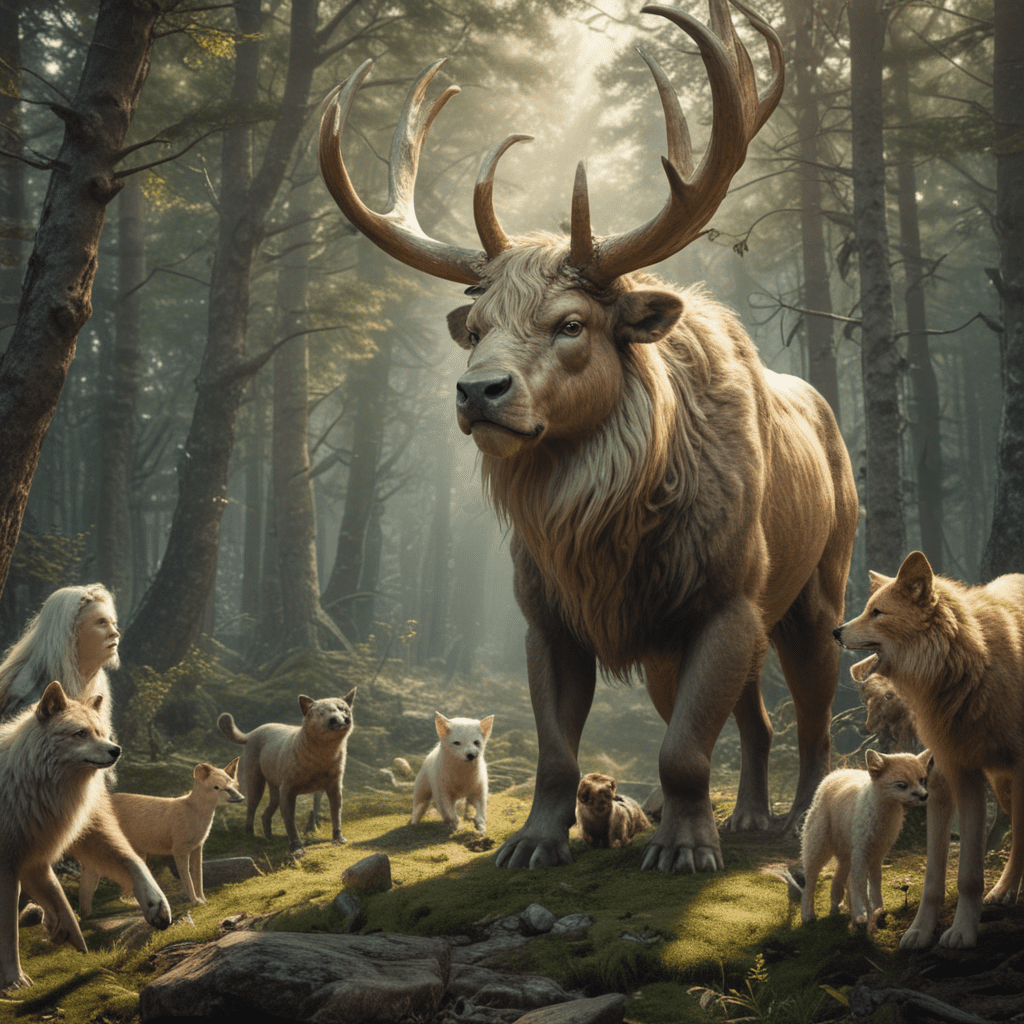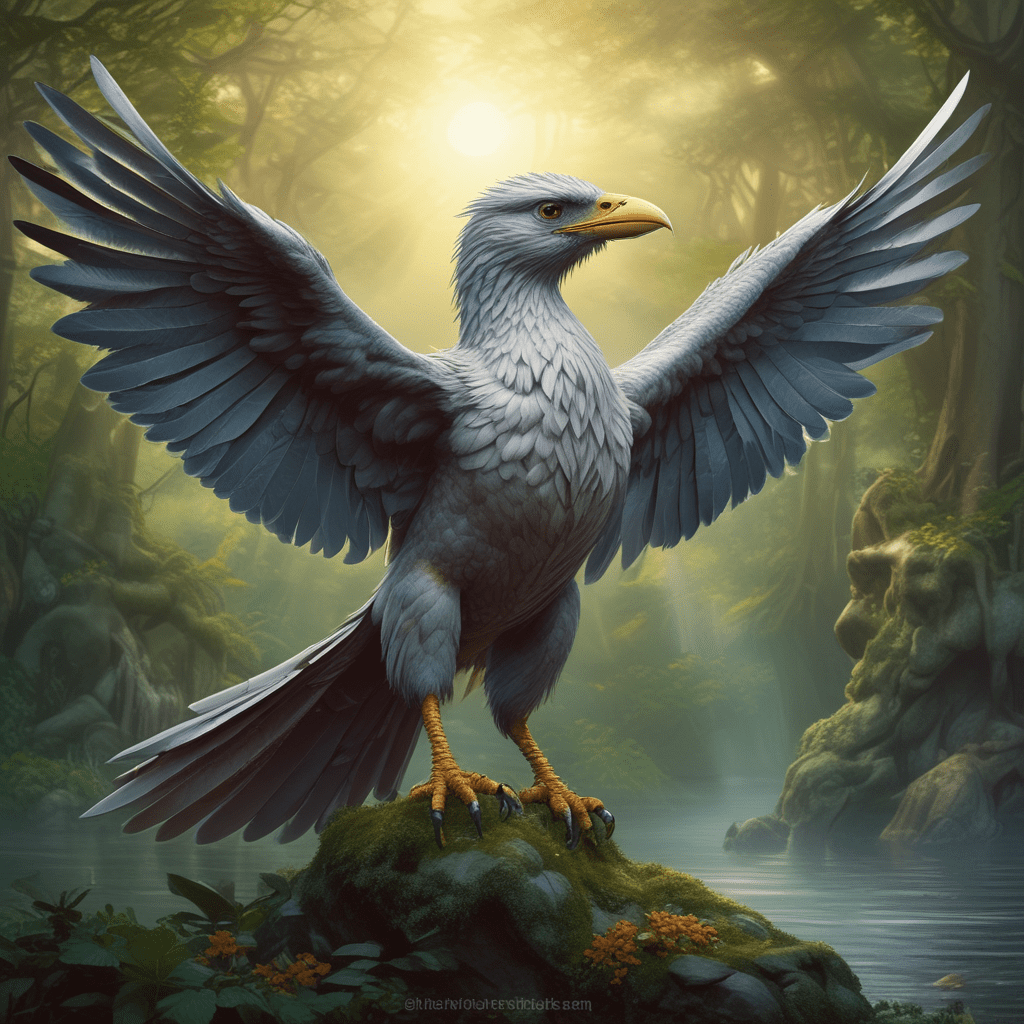Introduction
Finnish mythology is a tapestry of captivating stories, fascinating creatures, and profound connections between humans and animals. This relationship is central to Finnish folklore and beliefs, shaping the way people interacted with the natural world. In this article, we will delve into the rich mythology surrounding the human-animal connection, exploring its origins, manifestations, and significance.
Origins of the Human-Animal Connection
The belief in a deep bond between humans and animals can be traced back to the animistic beliefs of the ancient Finns. Animism is the belief that all things, including animals, possess a soul or spirit. This worldview engendered a sense of kinship and respect for the animal kingdom, fostering a harmonious coexistence between humans and their animal counterparts.
Animal Totems and Guardians
In Finnish mythology, many animals were revered as totems or guardians, representing specific qualities or aspects of the natural world. For instance, the bear was considered a symbol of strength and wisdom, while the eagle was associated with power and courage. These animals were believed to protect and guide individuals, clans, or entire communities.
Shapeshifting and Animal Transformation
The ability to transform into animals is a recurring theme in Finnish mythology. Legends abound of humans who could change their form to assume animal characteristics, often to escape danger or gain an advantage. This concept of shapeshifting reflects the fluidity of the boundary between humans and animals, hinting at a shared ancestry or connection.
Animal Wisdom and Guidance
Animals were often seen as sources of wisdom and guidance in Finnish mythology. People believed that animals could communicate with spirits and possessed knowledge of the natural world that humans lacked. Shamans and wise men would often seek guidance from animals through dreams, visions, or rituals.
Humans as Animals in the Afterlife
Finnish mythology also suggests that humans could transform into animals after death. It was believed that the souls of the deceased would take on animal forms, often those of their totem animals. This transformation symbolized the continuity of the soul's journey beyond the physical realm.
Animals in Finnish Mythology and Folklore
Numerous animals play significant roles in Finnish mythology and folklore. The epic poem "Kalevala" features a talking horse, Hiisi, and a wise eagle, Kotka. Other notable animals include the fox, known for its cunning, and the hare, associated with speed and agility.
The Significance of Animal Sacrifice
Animal sacrifice was an integral part of Finnish religious practices. Animals were sacrificed to honor gods, seek their favor, or ask for protection. The choice of animal for sacrifice was often determined by its totemic significance or association with a specific deity.
Human Influence on the Animal World
Finnish mythology also recognizes the impact of human actions on the animal world. Stories abound of hunters who disrespected animals or violated natural laws, resulting in misfortune or punishment. This emphasis reflects the belief that humans have a responsibility to coexist harmoniously with the animal kingdom.
Conclusion
The human-animal connection in Finnish mythology is a multifaceted and profound concept that encompasses beliefs about animal totems, shapeshifting, wisdom, the afterlife, and the influence of human actions on the natural world. This rich tapestry of stories and beliefs highlights the deep respect and interconnectedness that Finnish people have long felt with the animal kingdom.
FAQs
-
What is the significance of animal totems in Finnish mythology?
- Animal totems represent specific qualities or aspects of the natural world and are believed to protect and guide individuals, clans, or entire communities.
-
What does the ability to shapeshift into animals symbolize in Finnish mythology?
- Shapeshifting reflects the fluidity of the boundary between humans and animals, hinting at a shared ancestry or connection.
-
How do animals provide wisdom and guidance in Finnish mythology?
- Animals are often seen as sources of knowledge and insight, and shamans and wise men would seek guidance from them through dreams, visions, or rituals.
-
What happens to human souls after death in Finnish mythology?
- It is believed that the souls of the deceased can take on animal forms, often those of their totem animals, symbolizing the continuity of the soul's journey beyond the physical realm.
-
Why was animal sacrifice practiced in Finnish mythology?
- Animal sacrifice was an integral part of religious practices to honor gods, seek their favor, or ask for protection, with the choice of animal often determined by its totemic significance or association with a specific deity.




